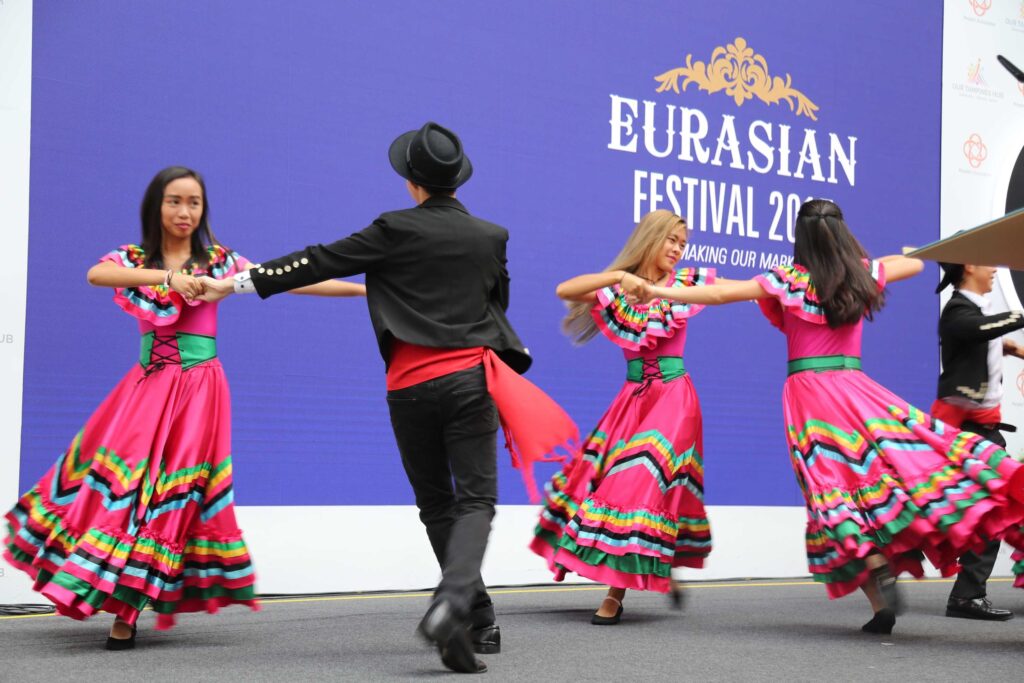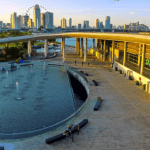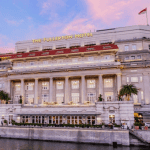Exploring Eurasian Culture in Singapore Heritage
There’s a delightful dance of heritage that unfolds in the heart of scenic Katong – the historical haven of the Eurasian community in our multicultural city-state, Singapore. Here, the richness of Eurasian culture beckons us earnestly through the evocative spaces of the Eurasian Heritage Centre. Stepping inside the centre, three heritage galleries invite us to partake in the unfolding of a narrative that has been woven meticulously over the centuries.
The first gallery unfolds the contributions of the Eurasian community in Singapore, a tale of adaptability and resilience hand in hand with the nation’s progress. The second gallery lets us step into the shoes of contemporary Eurasian figures, acquainting us with luminaries such as Joseph Schooling, an Olympic Gold Medallist, and political stalwarts like Benjamin Sheares and E.W. Barker. Finally, our gastronomical pilgrimage winds down at Quentin’s Eurasian Restaurant, where authentic dishes like the spicy Devil’s Curry and sugee cake, among others, give us much delectable food for thought.
Through this exploration, we hope to bring to you not just the essence, but the heart of Eurasian culture in Singapore. After all, every step taken into heritage is a step toward the vibrant tapestry of human dynamism.
Tracing the Origins of Eurasian Culture in Singapore

The rich tapestry of Singapore’s multicultural society prominently features contributions from its Eurasian community. This vibrant community, with its unique European-Asian heritage, spun from interactions during colonial times and their continual evolves, offers a captivating history and cultural richness to the sociocultural fabric of Singapore.
The Historical Intersection of East and West
The formation of the Eurasian community can be traced back to the historical intersection of eastern and western cultures, particularly during colonial encounters. European settlers, predominantly Portuguese and Dutch, intermingled with the local Asian populations. The fusion of these diverse cultures laid the foundation of the Eurasian community—retaining their distinct European heritage while simultaneously adopting various Asian customs and traditions.
Eurasians in Singapore’s Earliest Colonial Settlements
The Eurasian community, while small in terms of demographics, has exerted a substantial influence on the cultural and societal landscape of Singapore. Their arrival and settlements marked significant chapters in Singapore’s early colonial history. Drawing from their European-Asian heritage, the Eurasians contributed to the unique cultural melange in terms of language, traditions, and cuisines alike.
Prominent Personalities in Eurasian History
Over time, the Eurasian community has produced noteworthy personalities who have left an indelible mark on Singapore’s history. Influential figures such as Charles J. P. Paglar, a prominent local surgeon, and Sir George E. N. Oehlers, played critical roles in the socio-political landscape of Singapore. These figures helped shape not just the Eurasian identity but also contributed significantly to the broader Singaporean identity. The resilient narrative of the Eurasian community, through various challenges and transitions, has become an integral part of Singapore’s dynamic history and diverse societal fabric.
In tracing the origins and evolution of the Eurasian community in Singapore, a richer understanding of the nation’s multicultural heritage emerges. This understanding underscores the importance of every ethnic group in shaping the nation’s vibrant socio-cultural landscape while also serving as a reminder of the enriching diversity, tolerance, and integration that form the heart of Singaporean society.
Eurasian Culture in Singapore
Singapore’s multi-faceted cultural matrix has been significantly imprinted by the rich customs and traditions of its Eurasian community, reflecting a remarkable amalgamation of European and Asian influences. The vivid hues of the Eurasian culture are discernible in multiple facets of Singaporean life, imparting an exotic allure that sets it apart.
Inextricable from Eurasian culture are its gastronomic offerings, which serve as remarkable symbols of the community’s mixed heritage. Evolving over centuries, Eurasian food represents a culinary narrative that combines Asian spices and European cooking techniques. The result is a plethora of distinctive dishes that bring the flavors of two continents to local tables. From the rich and spicy Pork Vindaloo to the fiery Devil’s Curry, Eurasian cuisine provides a gastronomic journey that tantalizes the taste buds and fires up the imagination.
“With gastronomy as a core element, the Eurasian influence extends to a variety of distinctive dishes that offer a testament to the intermingled heritage, evident in the rich, spicy flavors.”
While the culinary arts offer a sensory exploration of Eurasian culture, the visual and performing arts afford a joyful appreciation of its creative expression. The Eurasian community vibrantly showcases its artistic prowess through a stunning array of arts and crafts, enriched by Portuguese and British influences. Music and dance emerge as significant symbols of this dynamic culture, from traditional Kristang songs that resonate with soulful melodies to the vibrant beats of authentic Eurasian dances.
Role of The Eurasian Association in preserving and promoting the community’s unique culture cannot be overstated. As a pivotal institution, it executes a multitude of initiatives directed at educating the wider society about the distinguished Eurasian customs, traditions, and artistic expressions. Its ongoing efforts underscore the vital importance of cultural preservation and highlight the deeply rooted Eurasian influence on Singapore’s socio-cultural landscape.
Our exploration of Eurasian culture in Singapore is further enhanced by recognizing the crucial role played by prominent Eurasian figures across various spheres. These include influential individuals who have shaped the arts and entertainment industry, contributed to national politics, and left indelible marks on Singapore’s history.
The Rich Tapestry of Eurasian Traditions
In the heart of Singapore’s multicultural city-state, the Eurasian community continues to weave a rich tapestry of traditions, reflecting their unique Asian-European heritage. From vibrant festivals and customs to arts and crafts, these traditions bring a distinct flavour to the cultural milieu of the city-state, becoming an integral part of Singapore’s diverse cultural landscape.
Eurasian Customs and Their Asian-European Fusion
Eurasian customs are a fascinating blend of both Asian and European influences. Traditions such as religious observances of Easter and Christmas have beautifully amalgamated within the local scene. Alongside, the beats and rhythms of traditional Portuguese dances and melodious strains of Eurasian music echo throughout Singapore, illustrating the deep-seated European influences that have been harmoniously woven into the culture of the local Eurasian community.
Traditional Eurasian Festivities in Singapore
The annual Eurasian Festival highlights the vibrant traditions and fervent spirit of the Eurasian community in Singapore. As an embodiment of the community’s unwavering commitment to cultural preservation, the festival gives a glimpse of the rich Eurasian heritage. It serves as a robust platform for the exchange of ideas and celebration of diversity, bringing the multicultural population of the city-state closer.
Eurasian Arts and Crafts – A Legacy Preserved
Eurasian arts and crafts display an intriguing blend of European and Asian techniques, vividly exhibiting the Eurasian culture at its finest. These artisanal treasures continue to be celebrated and preserved through cultural exhibits and museums spread across the city. Not just emblematic of the Eurasian heritage, these artifacts play a crucial role in enriching Singapore’s cultural heritage by offering a tangible link to the past and a poignant insight into the historical milieu that shaped the Eurasian community.
Conclusion
One cannot discuss the multicultural landscape of Singapore without acknowledging the important role of the Eurasian community. Their rich heritage in Singapore is a testament to the city-state’s historical and ongoing mix of diverse influences. This unique community has shaped and enriched our nation’s identity – bringing a range of colorful cultural attributes to the forefront, hewn from the interplay between east and west.
From meticulously preserved historical roots to the vibrant modern-day expressions, the Eurasian community integration into the Singaporean society serves as a model of communal harmony. Their culinary vibrancy, distinctive arts, and retaining of traditional customs all contribute to the unique cultural tapestry that makes Singapore one of the most fascinating multicultural hubs in the world.
There is an ongoing effort towards preserving Eurasian culture among future generations, a mission embraced by the community and supported by the wider public and government entities. This raises a broader conversation about the importance of maintaining cultural diversity in modern societies, and provides a shining example of how it can be achieved with determination and unity.
Thus, the trajectory of the Eurasian community, from their historical origins to their integral role in the present day, encapsulates the vibrant pluralism that the Singaporean society embodies. It is a testament to our commitment to unity in diversity, making the city-state an exceptional place to experience an amalgamation of cultures.
FAQ
How does the Eurasian culture contribute to the multicultural city-state of Singapore?
The Eurasian culture contributes to the multicultural city-state of Singapore by bringing in a blend of European and Asian heritage. The customs, traditions, culinary practices, and artistic expressions of the community offer a unique cultural facet to Singapore’s demographic mosaic.
What impact did Eurasians have during Singapore’s colonial era?
During Singapore’s colonial era, the Eurasian community, which consisted of European settlers that intermarried with Asian locals, laid the foundation for a unique cultural identity. Prominent Eurasian figures from this time, such as surgeon Charles J. P. Paglar and Sir George E. N. Oehlers, significantly influenced local politics and society.
What role does food play in the Eurasian culture?
Food plays a crucial role in Eurasian culture, acting as a representation of their mixed European and Asian heritage. Dishes like Pork Vindaloo and Devil’s Curry are particularly distinctive due to their rich, spicy flavors.
How does the Eurasian community in Singapore celebrate their traditions?
The Eurasian community in Singapore celebrates their traditions through religious observances like Easter and Christmas, traditional Portuguese dances and music, and festivals like the Eurasian Festival. They also preserve their cultural heritage through the practice of their traditional arts and crafts.
What efforts are made to preserve Eurasian culture in Singapore?
Efforts to preserve Eurasian culture in Singapore include community engagement initiatives, government support, and fostering public appreciation and awareness. Organizations like The Eurasian Association play a significant role in promoting and preserving the cultural heritage by organizing events and experiences that educate the wider society about this distinguished culture.








